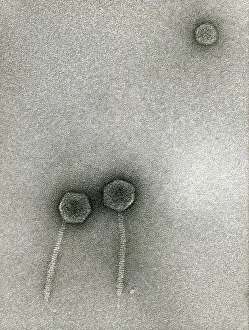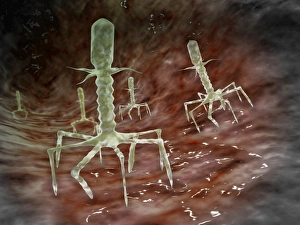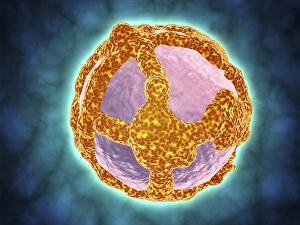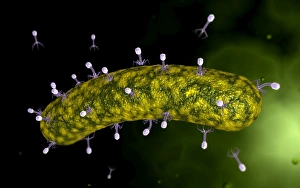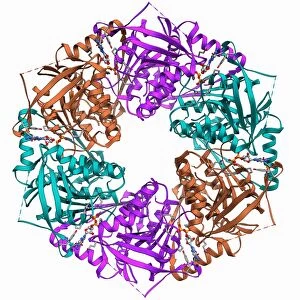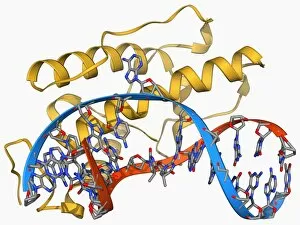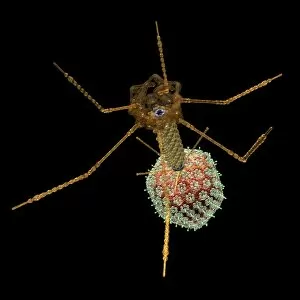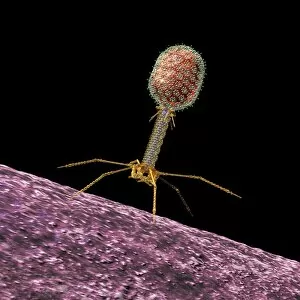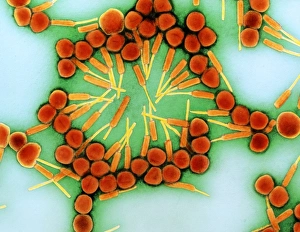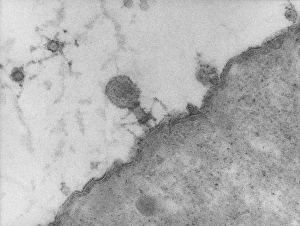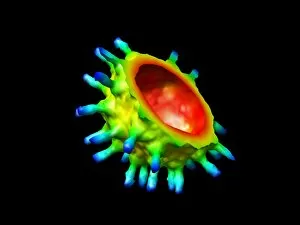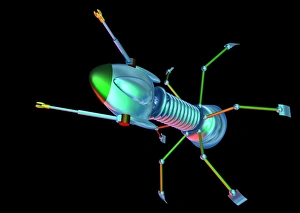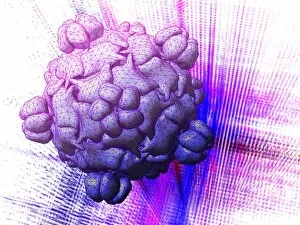Bacteriophage Collection
"Bacteriophages: The Mighty Predators of the Microscopic World" In the vast realm of microbiology
All Professionally Made to Order for Quick Shipping
"Bacteriophages: The Mighty Predators of the Microscopic World" In the vast realm of microbiology, bacteriophages reign as powerful predators that target bacteria with precision. Through various scientific techniques, we have been able to capture glimpses of these incredible organisms in action. Using a Transmission Electron Microscope (TEM), we observe the Lambda bacteriophages, their intricate structures resembling tiny lunar landers. These images reveal their ability to infect and hijack bacterial cells, ultimately leading to their destruction. Another computer model showcases Bacteriophage phi29, providing us with a virtual representation of its complex architecture. This digital visualization aids scientists in understanding how these phages interact with bacteria at a molecular level. Artwork depicting bacteriophages further captures our imagination. One piece portrays them as colorful entities floating around like cosmic beings amidst an invisible battlefield. Another artwork reveals microscopic views of bacteriophages attacking bacteria head-on, highlighting their relentless pursuit for survival. Electron micrographs offer detailed insights into negative-stained Prochlorococcus infected by bacteriophages. These captivating images showcase the battle between host and predator on a minuscule scale – an ongoing struggle within our oceans' ecosystems. As we delve deeper into this microbial world, more microscopic views unveil themselves - each frame capturing different species in all their glory. Artworks F007/7455 and F007/7454 depict these phage warriors poised for attack while F007/7457 presents them as mysterious creatures lurking in the shadows. Even Caulobacter has not escaped the attention of these relentless predators; artwork F007/7869 showcases yet another type of Caulobacter-specific bacteriophage ready to strike when opportunity arises. Bacteriophages hold immense potential for medical applications such as targeted antibacterial therapies or diagnostic tools against harmful pathogens. Understanding their behavior through various imaging techniques allows us to harness their power for the benefit of human health and the environment.

